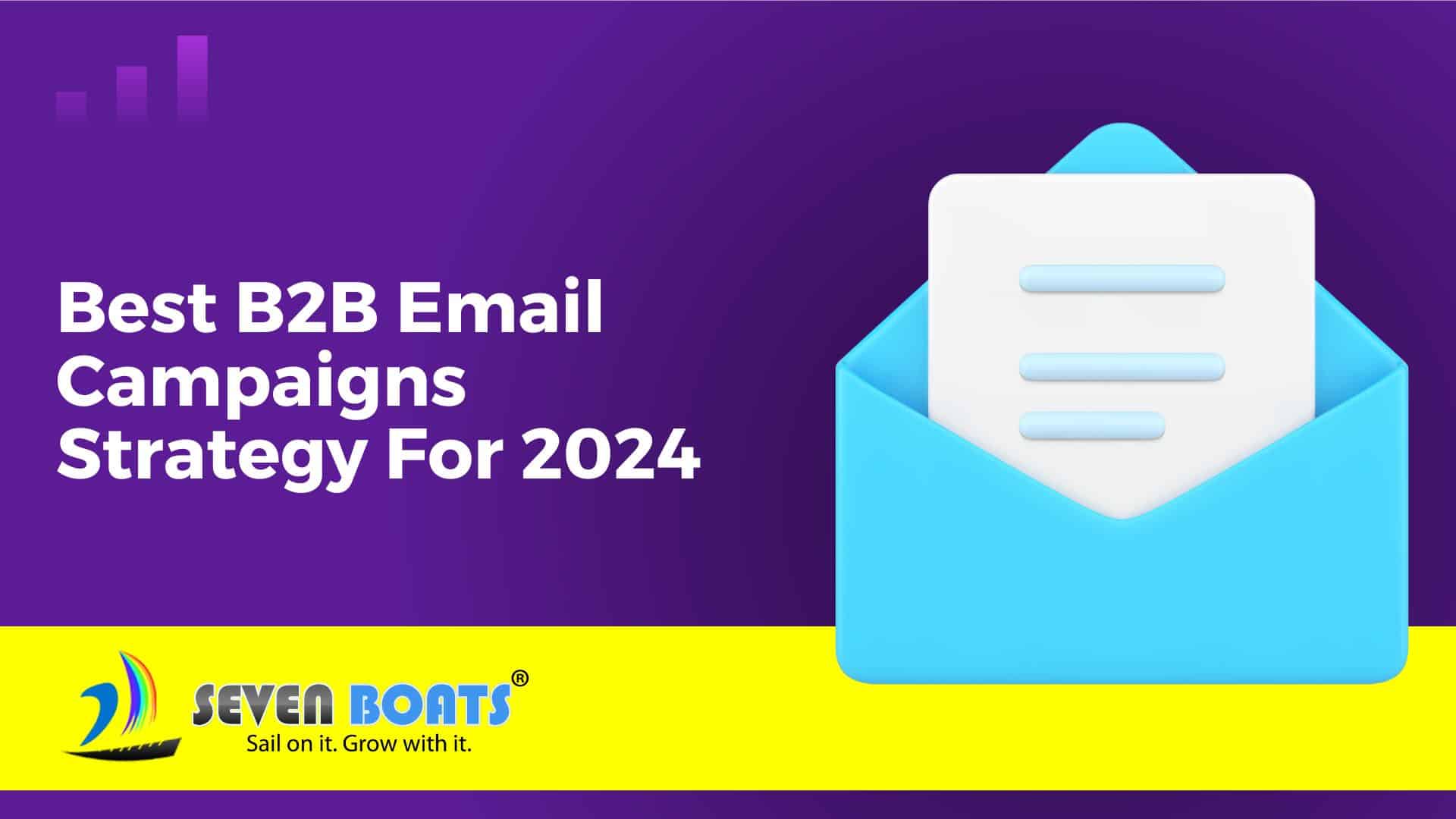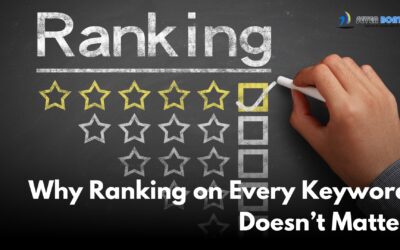In B2B marketing, standing out from the crowd is a constant challenge. With decision-makers bombarded by countless promotional messages every day, it’s becoming increasingly difficult for businesses to capture their attention and nurture valuable relationships. However, amid this cluttered digital space, one channel remains a powerful ally for B2B marketers Email marketing.
The statistics speak volumes about the efficacy of B2B email marketing. According to a study by the Content Marketing Institute, 87% of B2B marketers leverage email as part of their content marketing strategy. Moreover, email marketing generates a staggering $42 for every $1 spent, making it one of the most cost-effective marketing channels available
Well-crafted B2B email campaigns offer a tree of benefits, including:
- Increased Brand Awareness: By consistently delivering valuable content to your target audience, you can reinforce your brand’s presence and establish thought leadership in your industry.
- Improved Lead Generation: Email marketing allows you to nurture prospects through the buyer’s journey, providing them with the information they need to make informed decisions.
- Enhanced Customer Relationships: Regular communication and personalized content can foster stronger connections with existing customers, leading to increased loyalty and customer lifetime value.
- Stronger Thought Leadership Positioning: By sharing industry insights and expertise through email campaigns, you can position your brand as a trusted authority in your field.
- Boosted Sales Pipeline: Ultimately, effective B2B email marketing can drive more qualified leads and create opportunities for your sales team to convert them into customers.
The B2B buyer’s journey is complex, with multiple decision-makers involved and a longer sales cycle. Email marketing can support each stage of this journey, from raising awareness about your brand and solutions to nurturing leads with relevant content and closing deals with personalized offers.
This comprehensive blog post is designed for B2B marketers, sales professionals, entrepreneurs, and anyone seeking to leverage the power of email marketing to build relationships and drive growth in 2024 and beyond.
Building a Winning B2B Email Strategy
Crafting a successful B2B email strategy begins with defining clear and measurable goals. Whether your objective is to generate more qualified leads, increase website traffic, or secure more demo requests, your goals will shape the direction of your campaigns.
Once your goals are established, the next step is to identify your target audience and segment your email list accordingly. B2B audiences can be segmented based on various factors, including industry, company size, decision-making roles, and buyer personas. By tailoring your campaigns to specific segments, you increase the relevance and resonance of your messages.
Compelling content is the backbone of any effective B2B email campaign. To truly engage your audience, you need to provide value through high-quality, informative content. This can include:
- Educational Content: White papers, case studies, industry reports, and other resources that educate your audience on relevant topics and industry trends.
- Thought Leadership Pieces: Articles, blog posts, and other content showcasing your expertise and establishing your brand as a trusted authority in your field.
- Solution-Oriented Content: Content that directly addresses your audience’s pain points and demonstrates how your products or services can solve their challenges.
In addition to compelling content, the design and layout of your B2B emails play a crucial role in capturing attention and driving engagement.
Best practices for B2B email design include:
- Clean and Professional Layouts: Avoid cluttered or busy designs that can overwhelm or distract your audience. Simple, clean layouts with ample whitespace can enhance readability and professionalism.
- Clear Calls to Action (CTAs): Your emails should have prominent, concise CTAs that guide recipients towards the desired action, whether it’s downloading a resource, scheduling a demo, or making a purchase.
- Mobile Responsiveness: With an increasing number of professionals accessing emails on mobile devices, ensuring your campaigns are mobile-friendly and optimized for seamless viewing on all screen sizes is essential.
- Compelling Visuals: Strategically incorporating visuals like charts, graphs, and product images can enhance the message and make your content more engaging and memorable.
Implementing Your B2B Email Strategy
Choosing the right email marketing platform is a critical step in implementing your B2B email strategy effectively. When evaluating potential platforms, consider features such as:
- Segmentation Capabilities: Look for platforms that allow you to segment your email list based on various criteria, enabling more targeted and personalized campaigns.
- Automation Tools: Automation features can streamline your email marketing efforts, from sending triggered emails based on subscriber behavior to managing complex nurture sequences.
- Analytics and Reporting Functionalities: Robust analytics and reporting tools are essential for measuring the success of your campaigns and making data-driven decisions for optimization.
- Integrations with CRM and Marketing Automation Platforms: Seamless integration with your existing CRM and marketing automation tools can enhance workflow efficiency and data synchronization.
Popular email marketing platforms for B2B businesses include HubSpot, Mailchimp, Constant Contact, and Campaign Monitor, each offering a range of features tailored to different business needs and budgets.
Building a strong and engaged email list is another critical component of successful B2B email marketing. While purchasing email lists may seem tempting, this approach often leads to low engagement and potential spam complaints. Instead, focus on growing your list organically through tactics like:
- Valuable Content Downloads: Offering gated content such as whitepapers, eBooks, or industry reports in exchange for email sign-ups can attract highly targeted and interested subscribers.
- Engaging Website Signup Forms: Well-designed and strategically placed signup forms on your website can encourage visitors to join your email list and receive updates.
- Strategic Partnerships and Co-Marketing Initiatives: Collaborating with complementary businesses or industry influencers can provide access to new audiences and opportunities for list growth.
Once you’ve built a solid email list, the next step is to design email workflows that nurture leads through the buyer’s journey. This typically involves creating a series of emails tailored to different stages of the funnel, such as:
- Welcome Emails: These emails help establish a positive first impression and set expectations for the content and communication your subscribers can expect.
- Educational Content Drip Campaigns: A sequence of emails providing valuable educational content, such as industry insights, best practices, and thought leadership pieces, can nurture leads and position your brand as a trusted resource.
- Personalized Offers: As leads progress through the funnel, personalized offers and product-focused content can help address their specific needs and pain points, moving them closer to a purchasing decision.
- Re-engagement Campaigns: For subscribers who have become inactive or disengaged, re-engagement campaigns can reignite their interest and prompt them to re-enter the nurture cycle.
Optimizing the sending frequency and timing of your B2B email campaigns is also crucial for maximizing engagement and avoiding subscriber fatigue. While there’s no one-size-fits-all approach, consider the following best practices:
- A/B Testing: Experiment with different sending frequencies and analyze the impact on open rates, click-through rates, and overall engagement.
- Industry Benchmarks: Research industry benchmarks for B2B email sending and use them as a starting point for your campaigns, adjusting as needed based on your audience’s unique preferences.
- Audience Segmentation: Leverage audience segmentation to personalize sending times based on factors like time zones, industry verticals, and subscriber behavior.
According to a study by Omnisend, the optimal sending frequency for B2B email campaigns is 2-4 times per month, with the highest engagement occurring on Tuesdays and Thursdays between 10 AM and 2 PM.
Measuring Success and Optimizing for Growth
To ensure the long-term success of your B2B email marketing efforts, it’s essential to track and analyze the right metrics. Key Performance Indicators (KPIs) for B2B email marketing include:
- Open Rates and Click-Through Rates: These metrics provide insights into how effectively your subject lines and email content are resonating with your audience. Industry benchmarks for B2B open rates range from 15-25%, while click-through rates typically fall between 1-3% (Source: Constant Contact).
- Conversion Rates: Beyond opens and clicks, it’s crucial to measure the number of leads generated, demos booked, or sales closed as a direct result of your email campaigns.
- List Growth and Unsubscribe Rates: Tracking the growth (or decline) of your email list, as well as unsubscribe rates, can help identify potential issues with your content or targeting strategies.
- Engagement Metrics: Metrics like link clicks, video views, and time spent engaging with your content can provide valuable insights into the resonance and effectiveness of your campaigns.
Regularly analyzing the performance data from your B2B email campaigns is essential for making data-driven decisions and optimizing future efforts. Look for patterns and trends in your metrics, segmenting the data by factors like audience demographics, content types, or sending times to identify areas for improvement.
Don’t be afraid to continuously test and refine your approach. A/B testing different subject lines, email content, CTAs, and design elements can help you uncover what resonates most with your audience. Even small tweaks can lead to significant improvements in engagement and conversion rates.
One company that has mastered the art of data-driven optimization for its B2B email campaigns is HubSpot. By consistently analyzing user behavior and testing different variables, HubSpot has been able to achieve impressive results, including a 776% increase in email revenue (Source: HubSpot).
The Future of B2B Email Marketing :
As technology continues to evolve, the future of B2B email marketing promises exciting advancements that will shape the way businesses connect with their audiences. One game-changing trend is the integration of artificial intelligence (AI) and personalization.
AI-powered email marketing platforms can analyze vast amounts of data to deliver hyper-personalized content, subject lines, and sending times tailored to each individual subscriber’s preferences and behaviors. According to a study by Epsilon, personalized email campaigns can generate a 58% increase in revenue (Source: Epsilon).
Another emerging trend is the incorporation of interactive content and engaging elements within email campaigns. From interactive quizzes and polls to dynamic product demos and shoppable content, these elements can significantly enhance the user experience and drive higher levels of engagement.
In fact, a study by HubSpot found that interactive emails can increase click-through rates by up to 300% compared to static campaigns (Source: HubSpot).
Account-based marketing (ABM) is another area where email marketing is playing an increasingly pivotal role. By integrating email campaigns into a broader ABM strategy, B2B marketers can target specific high-value accounts with personalized content and messaging tailored to resonate with key decision-makers within those organizations.
According to a survey by Demand Metric, companies leveraging ABM generate 208% more revenue for their marketing efforts compared to those without ABM strategies (Source: Demand Metric).
As consumers become more accustomed to seamless, omnichannel experiences, B2B marketers will need to adopt a similar approach, integrating email marketing with other channels like social media, digital advertising, and in-person events.
This omnichannel approach not only provides a more cohesive and consistent experience for prospects and customers but also allows for more comprehensive data collection and analysis, enabling even more personalized and effective campaigns.
A study by Omnisend found that brands using three or more channels in their marketing efforts experienced a 494% higher customer retention rate compared to single-channel campaigns (Source: Omnisend)
Another trend that will shape the future of B2B email marketing is the growing emphasis on data privacy and compliance. With regulations like the General Data Protection Regulation (GDPR) and the California Consumer Privacy Act (CCPA) in effect, businesses must prioritize transparency, consent, and security when collecting and using customer data for email marketing purposes.
Failure to comply with these regulations can result in hefty fines and damage to brand’s reputation. As a result, we can expect to see more B2B email marketing platforms and strategies focused on privacy-by-design principles, with features like advanced consent management and secure data handling.
By staying ahead of these trends and embracing innovative technologies and approaches, B2B marketers can position themselves for success in the ever-evolving digital landscape.
Best Practices for Crafting Effective B2B Email Campaigns :
To ensure your B2B email campaigns resonate with your audience and drive tangible results, it’s essential to follow best practices throughout the planning, execution, and optimization phases. Here are some key strategies to keep in mind:
1. Segment for Relevance: Effective segmentation is crucial for delivering relevant, personalized content to your B2B audience. Segment your email list based on factors like industry, company size, decision-making roles, and buyer personas to ensure your messaging resonates with each target group.
2. Prioritize Quality Content: High-quality, informative content is the cornerstone of successful B2B email campaigns. Focus on creating educational resources, thought leadership pieces, and solution-oriented content that provides genuine value to your audience.
3. Optimize for Mobile: With an increasing number of professionals accessing emails on mobile devices, ensure your campaigns are fully optimized for mobile viewing. Use responsive designs, concise subject lines, and clear CTAs to provide a seamless experience across all screen sizes.
4. Test and Refine Continuously: Continuously test and refine your approach by experimenting with different subject lines, content formats, CTAs, and design elements. Use A/B testing to identify what resonates best with your audience and optimize accordingly.
5. Leverage Automation: Automation tools can streamline your email marketing efforts and ensure timely, personalized communication with your subscribers. Leverage automation for sending triggered emails, managing nurture sequences, and streamlining workflows.
6. Integrate with Other Channels: Adopt an omnichannel approach by integrating your email marketing efforts with other channels like social media, digital advertising, and in-person events. This provides a cohesive and consistent experience for your audience while enabling more comprehensive data collection and analysis.
7. Prioritize Data Privacy and Compliance: In the age of data privacy regulations like GDPR and CCPA, prioritize transparency, consent, and security when collecting and using customer data for email marketing purposes. Implement privacy-by-design principles and leverage advanced consent management features.
By following these best practices and staying ahead of emerging trends, you can craft B2B email campaigns that truly resonate with your audience, nurture valuable relationships, and drive growth for your business.
Conclusion :
In the dynamic world of B2B marketing, email campaigns remain a powerful tool for building relationships, nurturing leads, and driving growth. As we look ahead to 2024 and beyond, embracing innovation and staying ahead of emerging trends will be crucial for success.
Key Takeaways:
Define clear goals and segment your audience for maximum relevance and personalization.
Craft compelling content that provides genuine value and establishes your brand as a trusted authority.
Optimize your campaigns for mobile devices and prioritize a seamless user experience across all touchpoints.
Leverage the power of automation and cutting-edge technologies like AI and interactive content to enhance engagement and efficiency.
Adopt an omnichannel approach, integrating email marketing with other channels for a cohesive brand experience.
Prioritize data privacy and compliance, implementing privacy-by-design principles and adhering to regulations like GDPR and CCPA.
The future of B2B email marketing is brimming with exciting possibilities, from AI-powered personalization to immersive interactive experiences and seamless omnichannel integration. By staying ahead of these trends and continuously refining your strategies, you can position your business for success in the ever-evolving digital landscape.
Embrace the power of email marketing to build lasting relationships with your B2B audience, nurture valuable leads, and drive sustainable growth for your business. Implement the strategies outlined in this comprehensive guide, and get ready to unlock the full potential of this powerful marketing channel in 2024 and beyond.
Similar Read: What to do for a successful email marketing campaign








Wow, what an insightful article! Thank you for sharing these invaluable tips on crafting effective B2B email campaigns for 2024. As a marketer constantly striving to stay ahead in this ever-evolving landscape, I truly appreciate the detailed breakdown of strategies that align with current trends and consumer behaviors. From personalization to automation and beyond, your suggestions are not only timely but also incredibly practical. Implementing these strategies will undoubtedly elevate our email marketing efforts and drive meaningful results for our B2B initiatives. Kudos to you for compiling such a comprehensive guide – it’s a game-changer for marketers navigating the digital realm in 2024!
Thank you for sharing insights on B2B email campaigns for 2024! The evolving landscape demands innovative strategies, and your article offers valuable guidance. Looking forward to implementing these tactics to enhance our business communication effectively.
Exciting read! As businesses evolve, so do the strategies that drive successful B2B email campaigns. This blog delves deep into the dynamic landscape of email marketing, offering fresh insights and innovative tactics tailored for the year 2024. From personalized automation to interactive content, every tip is a gem for businesses striving to make meaningful connections with their audience. This blog is your go-to playbook for crafting impactful email campaigns that resonate and drive results. Can’t wait to implement these strategies and elevate our email game to new heights! Thanks for sharing this valuable stuff.
Fantastic tips! A well-crafted B2B email campaign strategy for 2024 will focus on personalization, segmentation, and automation to drive engagement. Incorporating interactive content and analytics will also be key to refining approaches and maximizing ROI. Excited to see how these strategies evolve this year!